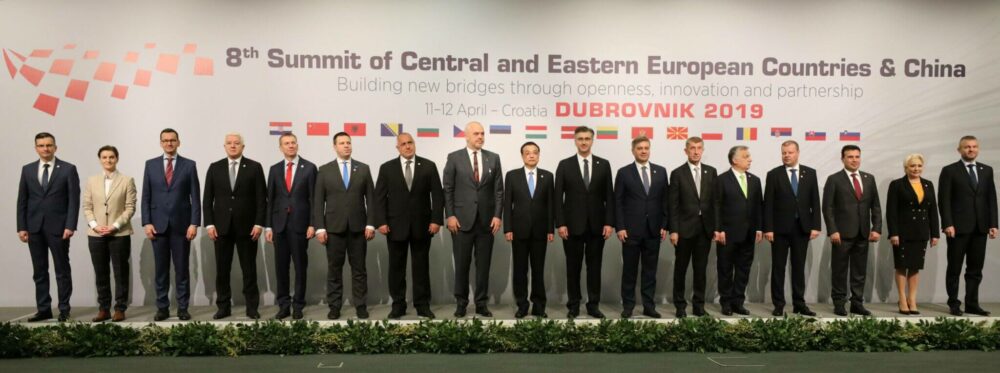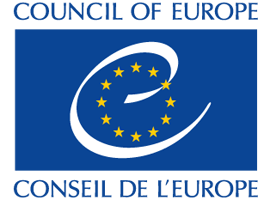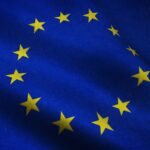
Empty shell no more: China’s growing footprint in Central and Eastern Europe
Ivana Karásková, Alicja Bachulska, Ágnes Szunomár, Stefan Vladisavljev, Una Aleksandra Bērziņa-Čerenkova, Konstantinas Andrijauskas, Liisi Karindi, Andrea Leonte, Nina Pejić, Filip Šebok
Policy paper in English
The large-scale audit of 17+1 in a form of a policy paper can be found online at www.chinaobservers.eu.
Key findings
- The 17+1 platform has been labeled as an ’empty shell’ with the assertion that cooperation between Central and Eastern Europe with China lacks substance. A large-scale audit of relations, however, points to a more complex scenario. Relations between China and Central and Eastern Europe are growing, encompassing political, economic and societal domains and are loaded with action.
- The fragmented nature of the information complicates understanding of the real nature of 17+1, as in individual states China’s actions seem scarce and random. Also the areas of interaction are treated as separate. It is only when the whole picture is analyzed that the progress and direction of the 17+1 platform become evident.
- In the past eight years, China has managed to build a system of interconnected relations in Central and Eastern Europe (CEE), where it was almost absent before. Paradoxically, China has contributed to the conceptualization and institutionalization of CEE as a region.
- Resembling a version of US alliances in East Asia, the 17+1 framework can be characterized by a hub and spokes logic of cooperation with China taking the lead in ‘multilateral bilateralism’.
- Despite its efforts, China has not transplanted its foreign policy concepts into the language of cooperation with Central and Eastern Europe. On the contrary, the CEE countries have successfully shaped the diplomatic language to stay in accordance with the EU framework.17+1 cooperation has almost universally led to the growth of high-level political contacts between the CEE countries and China. However, the development of bilateral relationships happens on separate trajectories. It is the activity and decisions taken by the individual 17 CEE countries rather than the format itself which shape the level of engagement.
- While Hungary and Serbia have supported China on political issues, they represent an exception rather than the rule. The assumptions that CEE as a whole has become more forthcoming towards China on political issues is not supported by the evidence.
- China has used the CEE as a testing ground for more activist party diplomacy led by the Chinese Communist Party. China cultivates relationships with important political elites to assure a long-term pro-China inclination in the respective countries.
- China has unsuccessfully tried to assuage the EU’s concerns about using the format to divide Europe. The US-China rivalry has become a factor in CEE relations with China, with several countries afraid of endangering their traditional ties with Washington. China has tried to walk a fine line in its approach towards Russia in CEE.
- Economic cooperation in 17+1 is mainly driven by China as it sets the agenda.
- China’s economic impact on CEE countries is still small. CEE countries are highly dependent on both trade and investment relations with developed, mainly-EU member states, while China represents a minor yet increasing share. The CEE region is also far from being among the most important partners for China.
- Despite the 17+1 format, China still handles its economic affairs on a bilateral basis. Relations with the countries of the Visegrád region and Serbia are of particular importance, while relations with other CEE countries lag behind.
- Trade relations remain relatively limited and unbalanced, leading to an increased trade deficit in all 17 CEE countries with China.
- Chinese FDI are modest and concentrated in a few countries (Hungary, Czechia and Poland) with almost no opportunity for other countries to receive sizable amounts of investment. Although financial cooperation has gained momentum, it is limited to EU member states.
- Tourism is the real success story of economic cooperation within the framework, since CEE countries have achieved higher visibility in China (while a general increase in the amount of Chinese middle class travelers may also play a role).
- Given the character of the Chinese system and the high level of penetration of Chinese society by the state, people-to-people contacts actually mean Chinese-government-to-people in relations with CEE countries.
- The number of Confucius Institutes has increased in CEE countries. Youth cooperation is also on the rise, with increased numbers of Chinese government scholarships issued to CEE students.
- Politically motivated programs targeting youth and political leaders, such as Bridge for the Future, China-CEE Young Political Leaders Forum and Political Parties Dialogue, go largely unnoticed in all 17 CEE countries.
Recommendations
- EU institutions
- The EU needs to continue including CEE EU members in efforts to shape a common EU policy towards China that should represent the interests of all member states.
- The EU should open a clear path to membership to the Western Balkan countries to offset the growth of China’s political influence. The EU must play a more active role in the Western Balkan’s economic development.
- Coordinated rules should be established relating to investment screening also in non-EU member states.
- Central and Eastern European
countries
- The 17+1 format should not be discarded. The simplistic view of Europe being divided by China through 17+1 should be opposed as it infantilizes the CEE states and denies CEE countries their agency.
- The 17 countries should improve their communication and coordination in feasible areas to shift the 17+1 into a multilateral forum serving primarily their interests.
- More attention should be given to the sub-national (regional, provincial, etc.) dimension of China-CEE cooperation that has largely developed under the radar. CEE states should pay attention to the potential politicization of such cooperation and China’s efforts to take advantage of the lower profile of local contacts to avoid attention.
- In order to benefit more from economic cooperation with China, CEE countries should act together. Regular 17+0 consultation meetings should precede summits.
- The major challenges of trade relations, such as trade deficit, cannot be overcome by single country solutions; CEE countries should follow the EU’s strategic aims in trade policy.
- More public (on EU, state, or regional levels) as well as private financial support for academic institutions researching China is needed in order to avoid a situation where Confucius Institutes and other PRC-related institutions become the most influential actors producing and disseminating knowledge about Chinese politics, society and culture.
- Investigative journalists
- The increased prominence of the Chinese Communist Party (CCP) in China’s approach towards the CEE warrants vigilance. There should be greater scrutiny towards nontransparent dealings between the local parties and the CCP (party-to-party diplomacy and cultivation of young political leaders through China-CEE Young Political Parties Dialogue and Political Leaders Forum).
- Independent, fact-based media coverage is needed in order to achieve greater transparency and understanding of mechanisms behind societal cooperation (e.g. youth cooperation, academic cooperation, joint research, etc.) between China and CEE countries.
- China analysts
- China watchers should exchange knowledge and experiences across Europe and with other parts of the world in order to detect potential threats to democratic standards governing the societal level of cooperation with Chinese actors outside of the PRC.
- It remains crucial not to equate all forms of societal cooperation with China with potential threats. The focus should be on achieving transparency.
- CEE countries should be aware of the risks associated with a growing skepticism towards China turning into racist attitudes against the Chinese diaspora, students and tourists. In order to avoid the rise of Sinophobia in CEE, clear divisions should be drawn between public criticism of government or party-led activities and Chinese nationals and their presence in the region.
Engaging China in 17+1: Outline of ACT strategy
The 17+1 platform has been labeled by some as China’s tool to divide and conquer Europe. At the same time, analysts (the author included) frequently dismissed these charges, arguing that 17+1 is an ’empty shell’ and cooperation between Central and Eastern Europe (CEE) and China lacks substance. The divide in understanding of the platform became apparent when China announced the upgrading of the annual 17+1 summit in Beijing in April 2020 from the level of prime ministers to the level of heads of state. The first camp of analysts perceived it as a worrisome trend, while the latter argued that it is mostly the prime ministers, not the presidents, who call the shots in Central and Eastern European politics. Thus the upgrade, they argued, was only symbolic.
The proponents of the ‘empty shell’ concept, however, seem to be wrong. A large-scale audit of relations between China and the 17 Central and Eastern European countries points to a more alarming scenario. Substance in relations with China is, indeed, not lacking, and cooperation between China and Central and Eastern Europe flourishes, encompassing political, economic and societal dimensions, and is loaded with action.
The reason why observers missed these developments is two-fold. First, the information is fragmented. In individual Central and Eastern European states, China’s actions look scarce and random. 17+1 is neither a multilateral forum, nor a bilateral one. It is an exercise of ‘multilateral bilateralism’, resembling the hub and spoke system of relations, with China acting as a hub in the middle. The spokes, i.e. the Central and Eastern European countries, exhibit – to their detriment – limited if any cooperation among themselves. Second, the areas of interaction, be they political, economic or societal, have been treated as separate. However, 17+1 is not only a political platform, it breaches politics and enters into domains of economy, youth cooperation, academic exchanges, sport, health or media cooperation. Only when the whole picture is analyzed, does the progress and direction of the 17+1 platform become evident.
Over the past eight years, since the inception of 17+1 in 2012, China has managed to build a system of interconnected relations in CEE, a region where it had been almost absent before. For the foreseeable future, China will continue to rise in power and importance. Its increasing global presence, already taken for granted, will inevitably stimulate its willingness to seek influence through different organizational and institutional settings, including (sub)regional organizations. Given the fact that China finds it extremely difficult to ‘infiltrate’ the long-existing ones, it will attempt to multiply the groupings of its own founding, and will try to extract as much as possible from those already in existence, such as 17+1.
The fears of Chinese incursions on many levels (technological, economic, political, or even military) are, factoring in specific regional contexts, substantiated and the dangers are real. However, a response to the threat of expanding Chinese influence in the form of shutting Beijing out is, in practical terms, impossible – not least because it would probably provoke more extreme reactions from the PRC. Instead, a three-pronged ACT (adapt > counter > target) strategy, modeled on the realities of the 17+1 initiative, is suggested.
ADAPT
While seemingly obvious, adapting to China’s presence in the region (be it in Central and Eastern Europe, or elsewhere) may in fact be the hardest component and the most difficult to pull off correctly. China as an actor and an issue will continue to be a stable and growing, if often irritating, component of various regional constellations. Accepting this fact should not be confused with resignation and much less submission to China’s strategic interests. Quite the contrary: national and international strategies need to assess the existing and potential scope of China’s presence, define priorities as well as risks stemming from this phenomenon, and implement or address them through subsequent policies.
COUNTER
Groupings like 17+1 were clearly born out of China’s intention to create institutional tools for amplifying its message and increasing its influence. Still, their members can conceivably utilize them as platforms for countering, limiting or even curbing China’s heft. The way forward consists in making full use of these organizations’ multilateral settings. While countries like Czechia, Estonia or Greece may find it difficult to face Chinese actions alone, there is no formal impediment against them bonding together and presenting their Chinese partners with a unified position. If China wants to retain its presence through these institutions, it is more likely (if grudgingly) to accept the ‘multilateral condition’ than to risk losing its influence altogether.
TARGET
Once the members of regional platforms like 17+1 rediscover the multiplication effects inherent in ‘effective multilateralism’, to borrow a phrase from the 2003 European Security Strategy, they could even turn these platforms into offensive instruments for targeting China with their specific demands. These might include widely controversial topics (from the Chinese perspective), such as limits imposed on Chinese technological companies or concerns with unfair trade practices, but also more cooperative issues like the need for properly regulating Chinese investment and improving market access for CEE countries’ products. While the actions of EU member states need to be in line with the agreed position on China within the EU, the CEE EU member states can utilize the 17+1 to achieve a better standing in negotiations not only vis-à-vis China, but also within the EU. The Western Balkans naturally pivot towards the European Union, despite the unfortunate lack of a credible and clear enlargement roadmap at the time of writing the publication. The EU should then open a clear path to membership to the Western Balkan countries to offset the growth of China’s political influence.
The current debate seems transfixed by the image of China as an omnipotent, ever-present and inescapable threat. China is – and will remain – far from it. Even small states, especially those safely separated from the immediate effects of China’s economic, political and military might, can succeed in promoting their own interests to their dealings with the PRC. The ACT strategy provides a general outline for achieving this objective.













